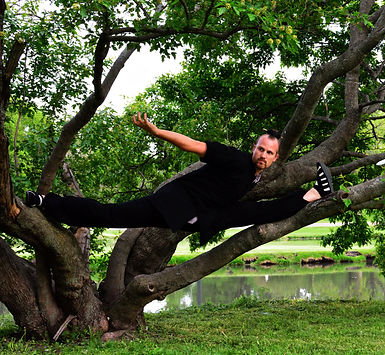top of page

ARCHIVED WEBSITE
The Ways Of Wudang
finding balance, one breath at a time...

AW:
Wu Dao Music:
Empty Hand

Basic Styles
The basic empty hand styles taught through AWCC are designed to initiate and condition the body towards the assimilation of all styles of Wudang Martial Arts. The beginning sets work to open and strengthen the channels on the practitioners body through correct posture, high kicks, strong punches, stamina training, and physical coordination.
The first basic hand style is Ji Ben Quan, or simply, Basic Fist. This form will teach one correct posture and the basic stances and kicks of Wudang styles, as well as train endurance and stamina.
After Ji Ben Quan, the practice of a three part set is begun. Xuan Gong Quan 1, 2, and 3 each work on the martial artists high kicks, wide stances, changes in direction, jumps, and more. Each form is taught and practiced as a separate form, however all three work on the same characteristics through different techniques.

The more intermediate levels of basic fist forms are Xuan Zhen Quan and Fu Hu Quan. Each have their own specific essence and style.
Xuan Zhen Quan is based on high kicks and high jumps. While Fu Hu Quan (Taming the Tiger Fist) relies on the strength of the practitioners stances as changes for high to low attacks and changes in direction are common.

Each basic hand style works to strengthen the body and stretch the tendons and muscle of the artist to prepare them for internal work and overall maintain a healthier and stronger body.
Advanced Styles
The following advanced empty hand styles should be followed by the training of the basic empty hand styles. However that is not a requirement and is solely up the artist and the teacher on the structure for each individual. Although it should be noted that the advanced styles rely on and combine moves from the basic sets. Therefore, teaching and training can be done at a smoother pace if the basic sets have been previously learned and practiced.

One of the first of the advanced sets is called Long Hua Quan, or Dragon Fist. This form combines previously learned stances and coordination to different techniques and more specific details. The moves are based on the movements of the Chinese ideal dragon. The style exercises fast twisting motions, grabs, joint manipulation, powerful strikes, high kicks, and changes in speed to embody the movements of the legendary dragon.
Based on the ideas of training external martial arts, eventually the practitioner is able to transmit the internal energy to external power (called fajing). The following forms are considered internal martial arts for this reason. However, we have included them here because of their nature against what people generally think of when they think of internal martial arts. Specifically, most people believe that internal means slow and relaxed, where these styles are used as a combination of slow and fast moves. However they have been included here simply for ease of research throughout the site.

One of these styles is Xing Yi Quan. Xing Yi has a long history of being an internal art as well as having roots in fighting application. Xing Yi is taught as a form based on the five elements, each having their own characters. The form uses strong stances, powerful strikes, fast charges and strives to achieve internal strength and coordination.
Bagua Zhang, or Eight Trigram Palm, is a style well known for its internal ability. Bagua gets much of its practice from the principles of the balance of yin and yang. This form utilizes circle walking, the trademark of Bagua practices, to teach indirect striking and fluidity in movement. The circle walking on its own has strong foundations as an internal art and can be used as a meditative workout. The goal of this practice is to promote soft movement, strong focus, and internal sensation as well fast attacks, stable posture, and external power.


The last advanced empty hand form is called Xuan Wu Quan. This form isn't necessarily the most advanced set, however, it does combine movements and techniques from almost all of the other empty hand styles. Therefore making it a composite style of the Wudang empty hand forms, both basic, advanced, internal and external.
The style of Xuan Wu has many changes from slow to fast and demonstrates the artists ability to generate external force through internal control, through multiple fajing moves.
The advanced empty hand styles are not to be taking necessarily as better skills and techniques, but rather as more detailed and rigorous training styles. Due to the fact that the external styles are used to benefit the exploration of internal understanding, the external styles can be looked at as stepping stones, in a way, towards that goal.

bottom of page